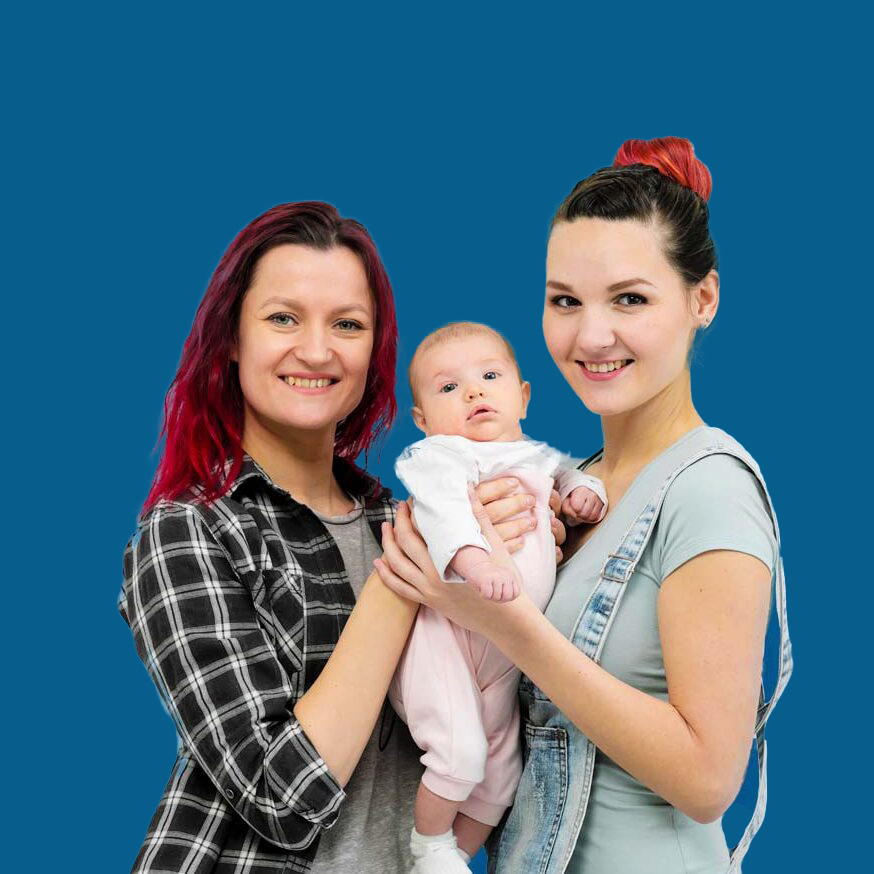Success of Children Raised by Same-Sex Parents
Unlike any other time in human history, parenthood has become a reality for same-sex couples, thanks to advancements in the science of surrogacy. The popularity of surrogacy in the gay community is an indication that the desire to raise children is independent of sexual orientation for both lesbian and two-men couples. But how do these children fare compared to those raised by heterosexual couples? Although surrogacy is a relatively new option for intended parents, it has been around long enough for a statistically significant number of children born through surrogacy to have reached adulthood, including those raised by same-sex parents. Let’s look at two of the most critical factors determining the likelihood of a child being a successful adult, same-sex compared to heterosexual households.
Success of Children Raised by Same-Sex Parents
Unlike any other time in human history, parenthood has become a reality for same-sex couples, thanks to advancements in the science of surrogacy. The popularity of surrogacy in the gay community is an indication that the desire to raise children is independent of sexual orientation for both lesbian and two-men couples. But how do these children fare compared to those raised by heterosexual couples? Although surrogacy is a relatively new option for intended parents, it has been around long enough for a statistically significant number of children born through surrogacy to have reached adulthood, including those raised by same-sex parents. Let’s look at two of the most critical factors determining the likelihood of a child being a successful adult, same-sex compared to heterosexual households.

Education
A study by Stanford professor Michael Rosenfeld took census data to examine 3,500 children of same-sex parents to compare rates of repeating grades against children from heterosexual parents. Repeated grades are a standard signal of slowed education progress. Michael’s study found same-sex and heterosexual households to have the same rate of repeated grades – no difference between the two. Another study taking a national sampling of over 20,000 children, 158 from a same-sex household, found no significant difference between these children and their peers with heterosexual parents.


A paper from the Belgian university KU Leuven shows that children raised in same-sex households actually fare better than their counterparts. This is significant as same-sex marriage was legalized in the Netherlands in 1995, providing some of the most long-term data on the topic in the world, “The results indicate that children from same-sex couples outperform children from different-sex couples on standardized test scores at the end of primary education.” One factor that might point to a possible cause for increased test scores is the rate of “accidental” children is virtually non-existent among same-sex couples, whereas children born to heterosexual parents who were not prepared or expecting a child often results in conditions not favorable to a child’s upbringing such as a single-parent household.
Education
A study by Stanford professor Michael Rosenfeld took census data to examine 3,500 children of same-sex parents to compare rates of repeating grades against children from heterosexual parents. Repeated grades are a standard signal of slowed education progress. Michael’s study found same-sex and heterosexual households to have the same rate of repeated grades – no difference between the two. Another study taking a national sampling of over 20,000 children, 158 from a same-sex household, found no significant difference between these children and their peers with heterosexual parents.
A paper from the Belgian university KU Leuven shows that children raised in same-sex households actually fare better than their counterparts. This is significant as same-sex marriage was legalized in the Netherlands in 1995, providing some of the most long-term data on the topic in the world, “The results indicate that children from same-sex couples outperform children from different-sex couples on standardized test scores at the end of primary education.” One factor that might point to a possible cause for increased test scores is the rate of “accidental” children is virtually non-existent among same-sex couples, whereas children born to heterosexual parents who were not prepared or expecting a child often results in conditions not favorable to a child’s upbringing such as a single-parent household.
Emotional Health
A study by the American Psychological Association shows that the sexual orientation of a child’s parents is irrelevant to their ability to provide a healthy and nurturing family environment. The same study concludes that children benefit most by having parents in a civil union, domestic partnership, or marriage, regardless of sexual orientation.
The Journal of Developmental & Behavioral Pediatrics’ National Survey of Children’s Health, comparing children from lesbian households to that of heterosexual couples, concluded that “Children with female same-sex parents and different-sex parents demonstrated no differences in outcomes.” This study did not include children raised by two fathers because data did not include a statistically significant number of these households.


Another study by the American Sociological Association found no measurable difference in the following categories between children raised to gay couples compared to heterosexual:
- -social development
- -academic performance
- -cognitive development
- -substance abuse
- -psychological health
- -early sexual activity
This same study found that socioeconomic circum

Emotional Health
A study by the American Psychological Association shows that the sexual orientation of a child’s parents is irrelevant to their ability to provide a healthy and nurturing family environment. The same study concludes that children benefit most by having parents in a civil union, domestic partnership, or marriage, regardless of sexual orientation.
The Journal of Developmental & Behavioral Pediatrics’ National Survey of Children’s Health, comparing children from lesbian households to that of heterosexual couples, concluded that “Children with female same-sex parents and different-sex parents demonstrated no differences in outcomes.” This study did not include children raised by two fathers because data did not include a statistically significant number of these households.
Another study by the American Sociological Association found no measurable difference in the following categories between children raised to gay couples compared to heterosexual:
- -social development
- -academic performance
- -cognitive development
- -substance abuse
- -psychological health
- -early sexual activity
This same study found that socioeconomic circum
Conclusion
The vast majority of research on the successful outcomes of children raised by same-sex couples compared to heterosexual couples show no measurable difference between the two. In fact, studies tend to lean towards higher test scores coming from same-sex households. These studies conclude that regardless of the sexual orientation, having parents in a committed relationship for the duration of the child’s upbringing is the most critical factor.
It is unlikely that any gay person would find these conclusions surprising or need research to validate they are capable to creating the type of loving, nurturing environment a child needs to grow into a successful adult.


Conclusion
The vast majority of research on the successful outcomes of children raised by same-sex couples compared to heterosexual couples show no measurable difference between the two. In fact, studies tend to lean towards higher test scores coming from same-sex households. These studies conclude that regardless of the sexual orientation, having parents in a committed relationship for the duration of the child’s upbringing is the most critical factor.
It is unlikely that any gay person would find these conclusions surprising or need research to validate they are capable to creating the type of loving, nurturing environment a child needs to grow into a successful adult.
